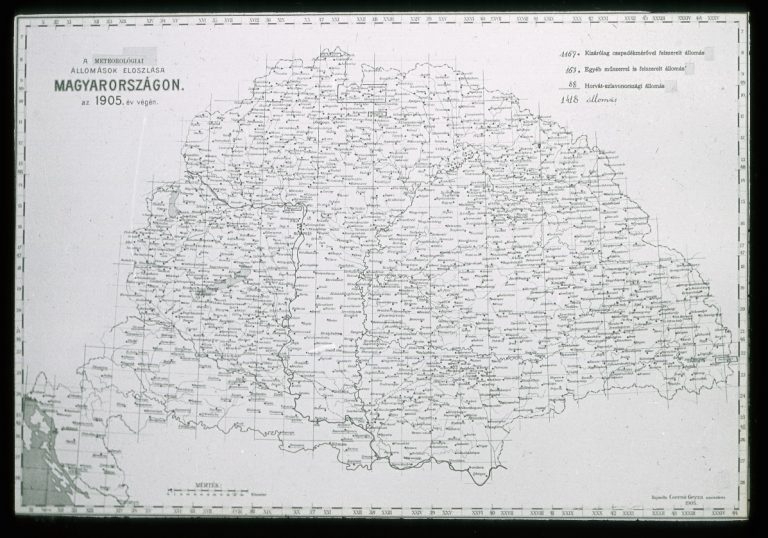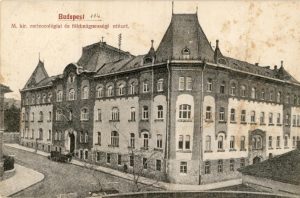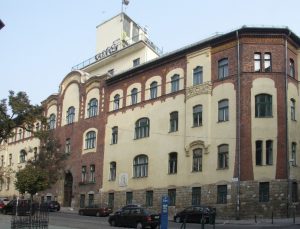150 years Hungarian Meteorological Service
The Hungarian Meteorological Service (OMSZ) has dedicated the year 2020 to a celebration of the 150th anniversary of its foundation. The jubilee year is marked by several important events: issue of a national stamp and coin, press and science conferences, and dedicated publications. The Main Ceremony was planned for the 4th of May; this is just one day after the official day of the publication of the Constitution of the institute signed by Franz Joseph Emperor of Austria, King of Hungary in 1870. This central event of this year’s anniversary would have been followed by a Gala Performance of the famous Hungarian novel, The Paul Street Boys, in one of the biggest theatres in Budapest, the Víg Theatre. Unfortunately, due to the COVID-19 epidemic, all celebrations have been postponed until the autumn when it will be much safer to hold big gatherings.

The foundation of the meteorological institute in the nineteenth century was preceded by the establishment of the meteorological observing network in the Austro-Hungarian Empire. This consisted of 40 stations out of which 14 were located in the current territory of Hungary. The main tasks of the newly-formed institute were to organize and assess meteorological measurements, as well as to investigate the climatic features of Hungary. The first annual report, containing meteorological and phenological observations back to 1871, was issued in 1873. The first daily weather forecast (on a map) was released on 15 June 1891. By then the number of employees had increased from 3 to 19. In 1893, the name of the institute changed to the Royal Hungarian Central Institute of Meteorology and Earth Magnetism. Until the First World War there was a time of prosperity: in 1897, the scientific journal of the institute, “Időjárás”, was launched and it is still being published today. Also a new building constructed for the purpose of hosting the institute – fulfilling this role even today – was inaugurated in 1910.

Radiosonde measurements to supply information to aviation meteorologists started in 1920. The next important milestone was the establishment of a storm warning centre in 1934 near the Lake Balaton, the biggest lake in Central Europe. Hungary was founding member of the World Meteorological Organization in 1947. In 1950, the geophysical section of the institute was separated and the remaining part was renamed the Hungarian Meteorological Institute (HMI), and its supervision was taken over by the Minister of Defence; three years later this task was transferred to the Deputy Prime Minister. It was at this time the institute gained responsibility for the whole of Hungary. In 1952, several observation centres in rural areas were set up, the most significant one being in a suburban area of Budapest, Pestszentlőrinc. It was named the Marczell György Observatory to honour one of the most outstanding experts in meteorology in the first decades of the 19th century who organized upper-air measurements. This is our present-day Main Observatory serving synoptic, radar, lightning, gamma dose and other measurements, and hosting our instrument calibration laboratory and air quality reference centre

After 1950, professional activity and conforming to international standards have been ensured by establishing the university education of meteorologists and the intensification of international relations, mainly through development programmes and missions funded by WMO. This was achieved by Frigyes Dési, leader of the institute between 1950 and 1974. The current name, the Hungarian Meteorological Service, was affiliated on the occasion of the centennial in 1970. Hail prevention activities started in 1976 and lasted over 15 years. The highest number of staff – nearly one thousand – was reached in 1988. Thereafter economic restrictions were soon applied and the continual reduction of staff has occurred; we now fulfil the duties of our predecessors with only 188 people. Since 1990, modernization, automatization of observing and information technology systems, and enhancement of cooperation with international institutions, such as ALADIN, ECMWF, EUMETNET, and EUMETSAT, were the main drivers of our activities by providing guidance and support for our work.

Today, we operate on the solid basis that our forefathers have built. We are more than grateful for their vast efforts that have made it possible for OMSZ to nowadays fulfil an extensive set of tasks. This includes maintaining a nationwide monitoring network, collecting, verifying and assimilating meteorological data, running its own numerical models to provide weather forecasts (including lake warnings and aeronautical and hail prevention forecasts), and supplying air quality and climate information to a growing number of users. However, we have to adapt to the public’s increasingly attentive, curious and sensitive towards meteorological information. But meteorology still remains a profession, a vocation and a service in which our predecessors have provided for us a great examples to follow. They have set the bar high!
Eszter Labo-Szappanos PhD.,
Head of Unit of International and Scientific Relations at Hungarian Meteorological Service
Kornélia Radics PhD., President, Hungarian Meteorological Service
Márta Buránszkiné Sallai PhD, Head of Unit of Projects and Procurements
References
- https://www.met.hu/en/omsz/OMSZ_tortenete/
- Czelnai, R.. 1995a. Az Országos Meteorológiai Szolgálat 125 éve (1870–1995) (125 years of history of the Hungarian Meteorological Service). 142 pp.
- Hungarian Meteorological Service – tradition, profession, innovation.


Kommentare sind geschlossen.